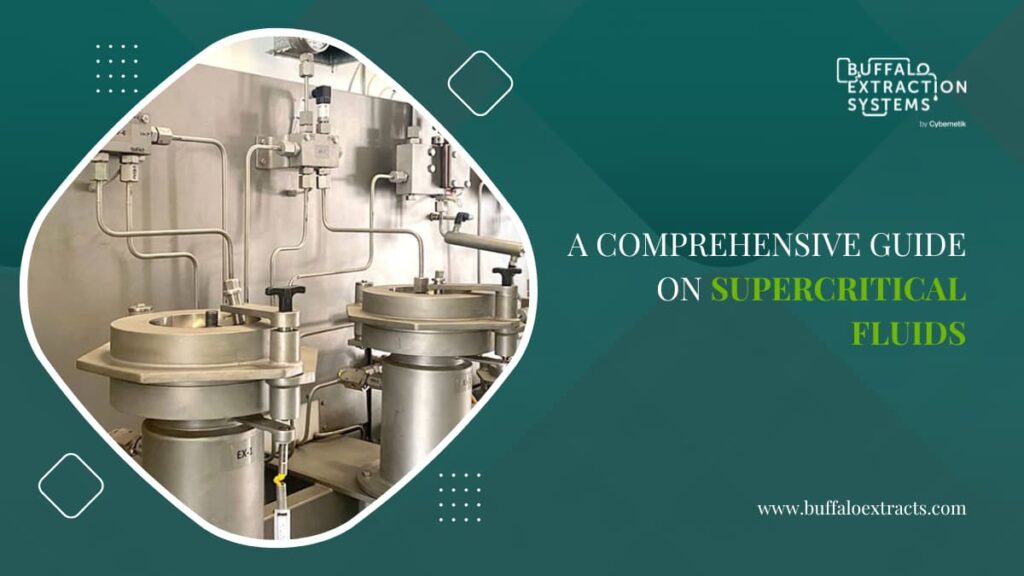Supercritical Fluids: Shaping Sustainable Futures Across Industries
Supercritical fluids represent a unique state of matter that combines the properties of both liquids and gases. This guide explores the fundamental concepts, applications, and advantages of supercritical fluids, shedding light on their diverse uses across various industries, and thereby providing a comprehensive guide on supercritical fluids.
Understanding Supercritical Fluids in the application of supercritical fluid extraction starts with their definition. Supercritical fluids exist at temperatures and pressures above their critical points, where the distinction between liquid and gas disappears. Commonly used substances in supercritical state include carbon dioxide and water.
Critical Point: The critical point is the temperature and pressure at which a substance transitions from one phase to another.
Supercritical fluids display distinctive properties, such as high diffusivity, low viscosity, and near-zero surface tension. These characteristics make them highly versatile in different applications such as medical cannabis extraction.
Let us now explore the applications, advantages, challenges, and prospects of this unique state of fluids to provide a comprehensive guide on supercritical fluids.
Applications Across Industries:

- Extraction Processes: Supercritical fluid extraction (SCFE) is a prominent application, particularly in the extraction of essential oils, flavors, and fragrances. Carbon dioxide is commonly used due to its low critical temperature and non-toxic nature.
- Pharmaceutical Industry: In pharmaceuticals, supercritical fluids are utilized for drug particle formation and encapsulation. The controlled conditions allow for precise particle size control, enhancing drug solubility and bioavailability.
- Food and Beverage: Supercritical carbon dioxide is employed in decaffeination processes for coffee and tea. Its selective nature ensures that only caffeine is extracted, leaving the flavor compounds intact.
- Environmental Applications: Carbon dioxide becomes a greenhouse gas (GHG) only when allowed to escape to the atmosphere. Carbon capture and storage (CCS) makes supercritical carbon dioxide (sCO2) an eco-friendly gas.
- Material Synthesis: Supercritical fluids are used in the production of advanced materials. For example, supercritical water oxidation (SCWO) is employed to treat hazardous waste, breaking down organic compounds into harmless byproducts.
- Analytical Chemistry: Supercritical fluid chromatography (SFC) is a powerful analytical technique used to separate and analyze compounds. It offers advantages over traditional liquid chromatography, such as faster analysis times and higher efficiency.
Advantages of Supercritical Fluids:
- Solvent Power: Supercritical fluids exhibit enhanced solvent power compared to their liquid counterparts. This property is particularly advantageous in extraction processes where high solvency is essential.
- Tunable Properties: The properties of supercritical fluids, such as density and viscosity, can be easily tuned by adjusting temperature and pressure. This tunability allows for precise control over various processes.
- Environmentally Friendly: In many applications, supercritical fluids serve as eco-friendly alternatives to traditional solvents. For instance, supercritical carbon dioxide is non-toxic, non-flammable, and readily available, making it a sustainable choice vis-à-vis organic solvents.
- Selective Extraction: Supercritical fluids can selectively extract certain compounds, offering a high degree of specificity. This selectivity is crucial in industries such as food and pharmaceuticals, where the preservation of specific flavors or active ingredients is essential.
- Reduced Processing Time: Processes involving supercritical fluids often have shorter processing times compared to conventional methods. This efficiency is particularly valuable in industrial settings, contributing to increased productivity.
Challenges and Considerations: While supercritical fluids offer numerous advantages, some challenges and considerations must be taken into account:
- Equipment Complexity: The design and operation of cannabis oil extraction equipment for working with supercritical fluids can be complex and may require specialized knowledge. High-pressure systems demand careful engineering to ensure safety.
- Costs: The initial investment and operational costs associated with supercritical fluid technologies can be higher than traditional methods. Over the long term, however, the benefits more than make up for the costs.
- Material Compatibility: Certain materials may not be compatible with supercritical fluids, requiring the use of corrosion-resistant materials. This consideration is essential to ensure the integrity and safety of the equipment.
- Scale-up Challenges: Scaling up processes from laboratory to industrial scale can present challenges. Factors such as heat transfer and mass transfer become more critical, requiring careful optimization.
Future Directions and Innovations: As research in the field of supercritical fluids continues, several exciting avenues for innovation are emerging:
- Nanoparticle Synthesis: The use of supercritical fluids in nanoparticle synthesis is an area of active research. Precise control over particle size and morphology makes supercritical fluid technology promising for the production of advanced nanomaterials.
- Energy Storage: Exploration of supercritical fluids in energy storage systems, such as advanced batteries and super-capacitors, is gaining traction. The unique properties of these fluids could contribute to the development of more efficient energy storage solutions.
- Biomedical Applications: Supercritical fluids are being investigated for various biomedical applications, including drug delivery and tissue engineering. Their ability to provide controlled release of substances makes them valuable in these fields.
- Waste Treatment: Further advancements in supercritical water oxidation (SCWO) for waste treatment hold promise for addressing environmental challenges. The efficient breakdown of hazardous substances in supercritical water could revolutionize waste management practices.
Conclusion
Supercritical fluids have evolved from being a niche area of study to finding widespread applications across diverse industries. Their unique properties, coupled with advancements in technology and understanding, continue to open up new possibilities. As research and innovation in this field progress, we can expect even more exciting developments and supercritical fluid extraction applications, further solidifying the role of supercritical fluids in shaping the future of various industries.
The expanding role of supercritical fluids in shaping the future of industries is marked by a growing emphasis on sustainability and efficiency. As environmental concerns become more pressing, the eco-friendly nature of supercritical fluids positions them as key players in green technologies. From carbon capture and storage to environmentally benign extraction processes, supercritical fluids offer solutions that align with the global push for sustainable practices. Moreover, ongoing advancements in equipment design, material compatibility, and process optimization are addressing challenges and making supercritical fluid technologies more accessible. Advancements also mean that a comprehensive guide on supercritical fluids is some time away.

